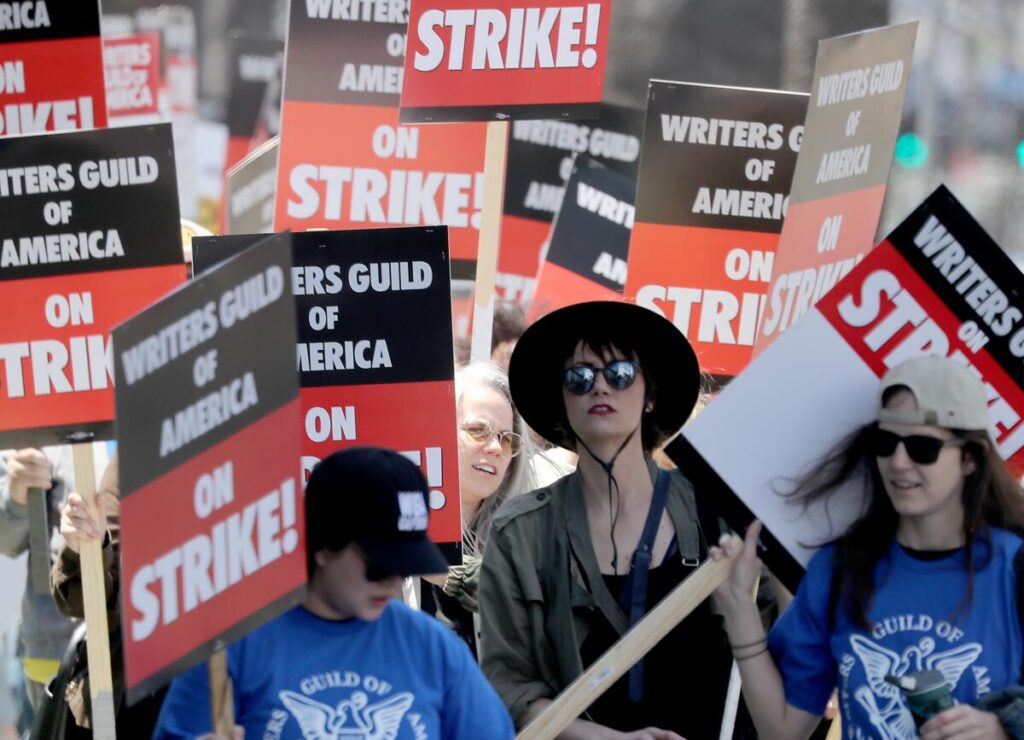Women and the Writers Strike

Interesting breakdown in Variety about the role of women leading the writers strike.
“Why did this strike look different? The people at the forefront of it really have been a lot of marginalized writers — writers of color, women and queer writers,” says Caroline Renard, an early career writer-director who was a Disney-based strike captain. She came to the role with plenty of relevant experience as an activist and organizer.
“I’m loud. I know how to talk, and I know how to organize,” she says.
The WGA enlisted an estimated 365 strike captains during the 148-day action that began on May 2, relying on them to fulfill a crucial logistical role — organizing picket lines.
The captains network was essential to the execution of large-scale picketing at multiple sites a day in Los Angeles and New York, in addition to tactical dispatches of picket teams to shut down location shoots. The captains created their own concentric communication circles through every available channel, from WhatsApp and Signal to X direct messages to Zoom calls to large text message chains. The captains were the backbone of the guild’s campaign to put a human face on the guild’s work stoppage through the highly symbolic sight of writers carrying signs as they withhold their labor outside of studio gates.
“If you are a woman or a person of color, you have probably jumped through a few more hoops to get where you are in our business,” says Niceole Levy, a strike captain who was based at Universal. “We have a natural appreciation for why we need to do this work — so someone else doesn’t have to jump through these hoops.”
Amy Berg, the seasoned showrunner who led the picket effort outside the Fox Studios lot in West Los Angeles, shares that sentiment. “To cope, we’ve naturally created our own community to support one another along the way,” Berg says. “The strike was basically a large-scale extension of that, so maybe it came more naturally for us to step into that role.”
Jonterri Gadson, an Amazon-based strike captain, had a tough adjustment at first until she realized the larger purpose of picketing.
“It took me a long time to be comfortable with just walking in circles, until I realized it was more about the community we were building and the solidarity we were building. We became very close on the picket lines. We’re friends for life.”
One thing that was very clear from both Hollywood strikes is that the workers were really hanging together. Sure there were some cranky people who are elites in the field and who didn’t really care, but mostly, these were well-organized actions with a lot of solidarity within the unions and with the rest of the labor movement.


